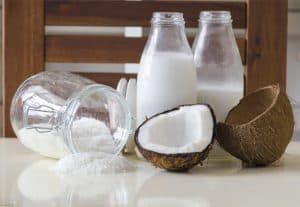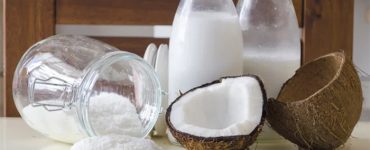When we think of purine-rich foods, the first thing that comes to mind is often gout, a painful form of arthritis caused by the buildup of uric acid crystals in the joints. However, the impact of high-purine foods goes beyond gout and can have broader implications for our health.

In this article, we will explore the various ways in which consuming high-purine foods can affect our overall well-being, highlighting the importance of understanding the connection between purines and our body’s intricate systems. So let’s dive in and discover how these foods can influence more than just gout!
Beyond Gout: Impact on Cardiovascular Health
High-purine foods not only affect gout but can also have implications for cardiovascular health. The relationship between purines and cardiovascular conditions stems from the effects of purines on blood pressure and cholesterol levels.
Purines and Blood Pressure
Excessive purine intake has been associated with an increased risk of hypertension, or high blood pressure. Purines can contribute to vasoconstriction, the narrowing of blood vessels, which raises blood pressure levels. Elevated blood pressure is a significant risk factor for heart disease, stroke, and other cardiovascular complications.
Cholesterol Levels and Purine Metabolism
Purines can influence cholesterol levels, particularly low-density lipoprotein (LDL) cholesterol, often referred to as “bad” cholesterol. High levels of LDL cholesterol can contribute to the development of atherosclerosis, a condition characterized by the buildup of plaque in the arteries, narrowing their diameter and increasing the risk of heart disease.
Gout as a Cardiovascular Risk Marker
Gout itself has been recognized as a potential marker for cardiovascular risk. Research suggests that individuals with gout have a higher likelihood of developing cardiovascular diseases, such as coronary artery disease and heart attacks. The inflammatory processes triggered by excess uric acid in gout can contribute to the development of cardiovascular complications.
Lifestyle Modifications for Cardiovascular Health
Reducing the consumption of high-purine foods can be beneficial not only for managing gout but also for promoting cardiovascular health. Adopting a heart-healthy diet, rich in fruits, vegetables, whole grains, lean proteins, and healthy fats, while minimizing high-purine foods and saturated fats, can help maintain optimal cholesterol levels and blood pressure.
The Importance of Overall Heart Health
Understanding the broader impact of high-purine foods on cardiovascular health is crucial for individuals, especially those with gout. Managing purine intake and making lifestyle modifications can contribute to a healthy heart and reduce the risk of cardiovascular diseases. Regular exercise, smoking cessation, stress management, and routine check-ups are also vital for maintaining cardiovascular well-being.
Inflammation and Joint Health
In addition to gout, high-purine foods can impact joint health by contributing to inflammation. Chronic inflammation can exacerbate existing joint conditions and increase the risk of developing arthritis and other inflammatory disorders.
Purines, Inflammation, and Joint Inflammation
Excessive purine consumption can lead to an increased production of uric acid, triggering an inflammatory response in the body. The inflammatory processes associated with purine metabolism can directly affect joint tissues, leading to joint inflammation, swelling, and discomfort.
Gout and Joint Inflammation
Gout, as a result of elevated uric acid levels, is characterized by intense joint inflammation. The accumulation of uric acid crystals in the joints leads to the activation of the immune system and the release of inflammatory mediators, causing pain and swelling. Managing purine intake is essential for controlling gout-related joint inflammation.
Arthritis and High-Purine Foods
While gout is a specific type of arthritis, high-purine foods can also influence other forms of arthritis. Some studies suggest that purines may contribute to the development or worsening of conditions such as osteoarthritis and rheumatoid arthritis. Minimizing purine intake may help alleviate symptoms and reduce joint inflammation.
Inflammatory Conditions Beyond Arthritis
The effects of purine-rich diets extend beyond arthritis. Chronic inflammation in the body has been linked to various health conditions, including cardiovascular diseases, diabetes, obesity, and certain types of cancer. By reducing inflammation through dietary modifications, individuals can potentially mitigate the risk of these inflammatory disorders.
Anti-Inflammatory Diet for Joint Health
Adopting an anti-inflammatory diet can be beneficial for joint health and overall well-being. This involves consuming foods that have anti-inflammatory properties, such as fruits, vegetables, whole grains, fatty fish rich in omega-3 fatty acids, nuts, and seeds. Avoiding or minimizing high-purine foods can further support joint health.
Kidney Function and Purine Metabolism
The impact of high-purine foods extends beyond joints and inflammation; it also affects kidney function and purine metabolism. The kidneys play a crucial role in filtering and eliminating waste products from the body, including uric acid generated from purine breakdown.
Purine Metabolism and Uric Acid Elimination
After purines are metabolized, uric acid is produced as a waste product. Healthy kidneys help filter uric acid from the bloodstream and excrete it through urine. However, excessive purine intake can lead to increased uric acid levels, putting a strain on kidney function.
Kidney Stones and Purine Consumption
Elevated uric acid levels can contribute to the formation of kidney stones, a condition known as uric acid nephrolithiasis. When uric acid crystallizes in the kidneys, it can combine with other substances to form stones. Restricting dietary purine intake may reduce the risk of developing kidney stones related to purine metabolism.
Gout and Kidney Disease
Gout and kidney disease often coexist. The accumulation of uric acid crystals in the joints can also occur within the kidneys, leading to kidney damage. Conversely, pre-existing kidney dysfunction can impair the excretion of uric acid, resulting in elevated levels and increasing the likelihood of gout development.
Managing Purine Intake for Kidney Health
Maintaining kidney health while managing purine intake is important. It involves consuming a balanced diet that supports overall kidney function. Adequate hydration is essential to promote urine flow and help flush out excess uric acid. Moderation in purine-rich foods, along with a focus on a nutrient-rich diet, can support kidney health.
Seeking Professional Guidance
Individuals with pre-existing kidney conditions should work closely with healthcare professionals, such as nephrologists or registered dietitians, to develop a personalized plan. This plan may include appropriate dietary modifications to manage purine intake and support kidney function while considering other dietary restrictions or medical needs.
Conclusion
In conclusion, high-purine foods can have a significant impact on our health beyond their association with gout. While gout remains a primary concern for individuals who are susceptible to this condition, it’s essential to recognize the broader implications of purine-rich diets. From cardiovascular health to inflammation and kidney function, the effects of purine metabolism are intricately linked to various physiological processes within our bodies.









